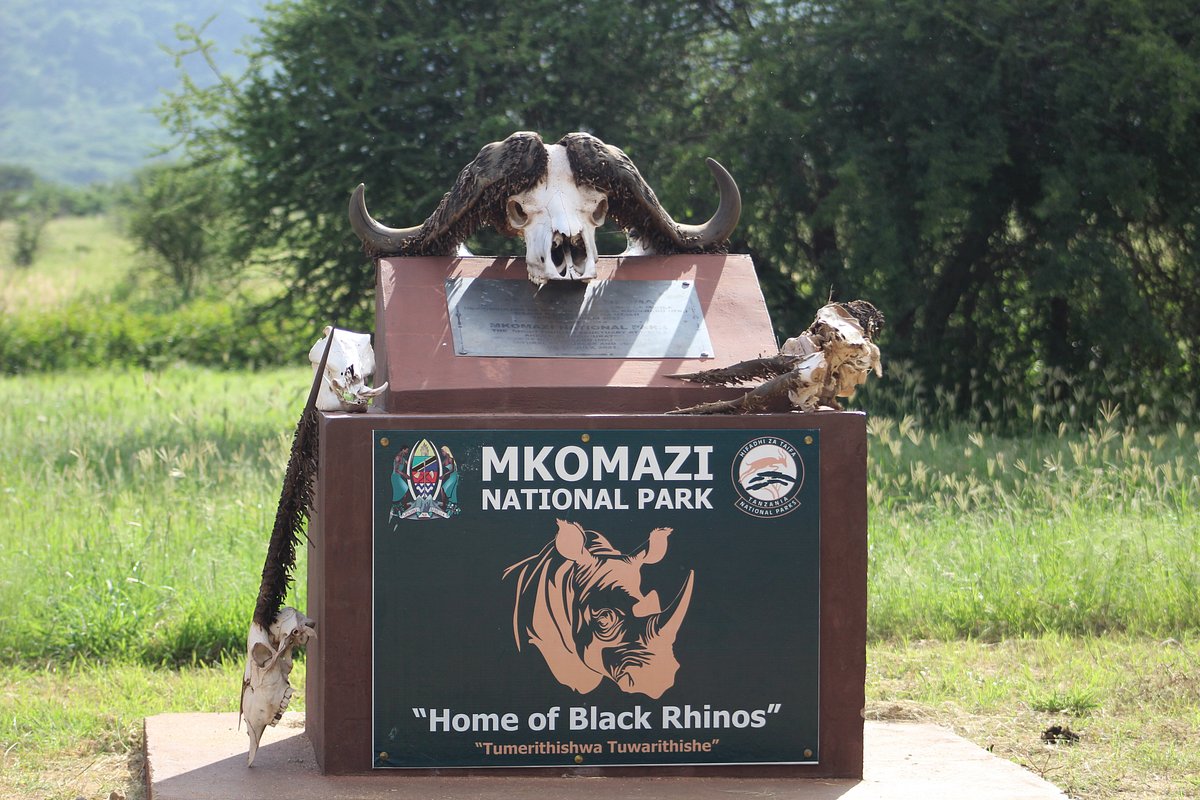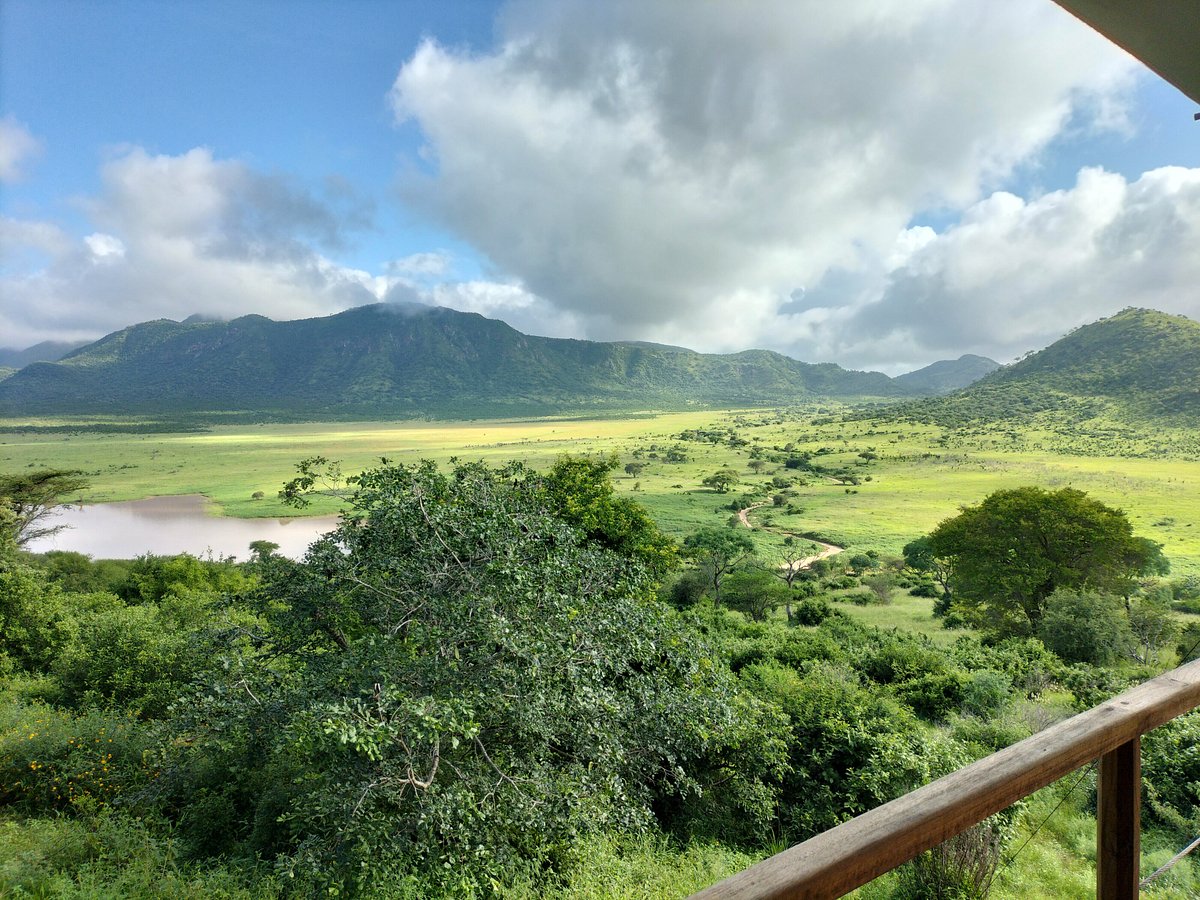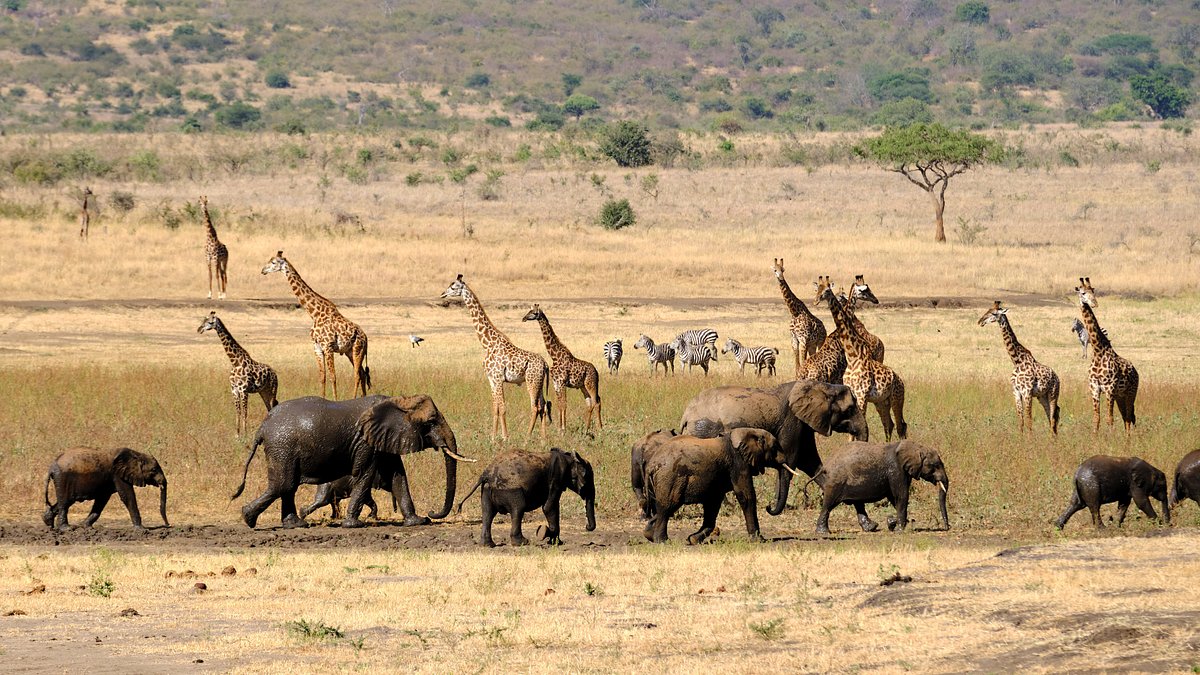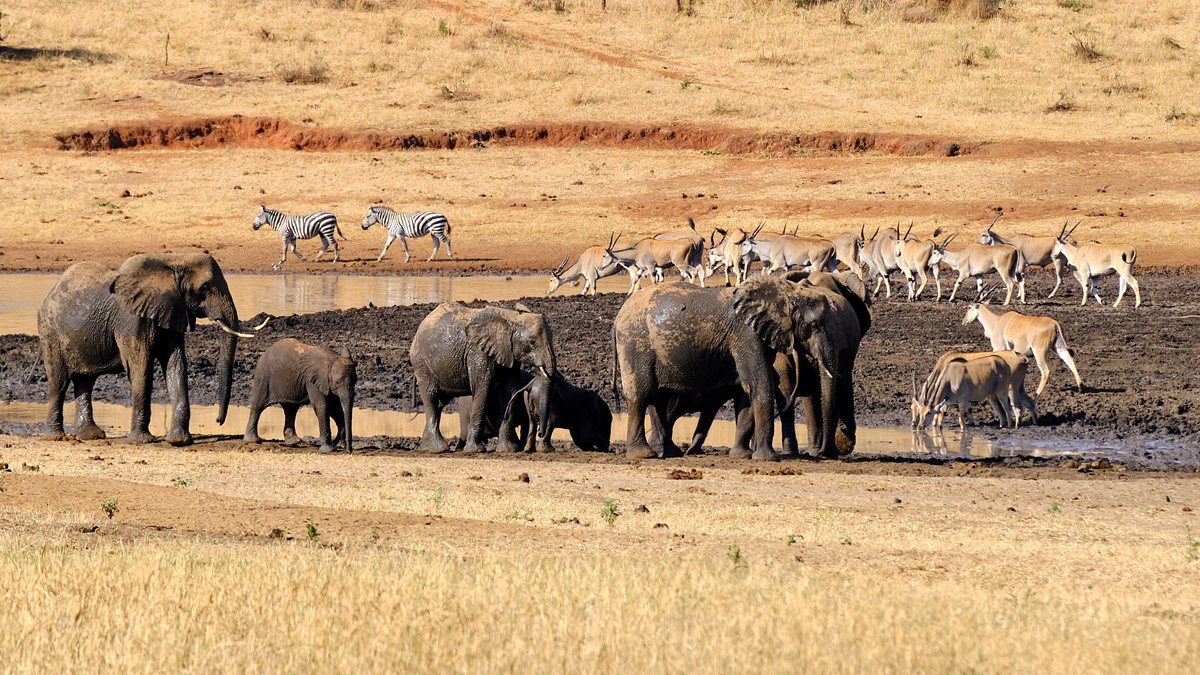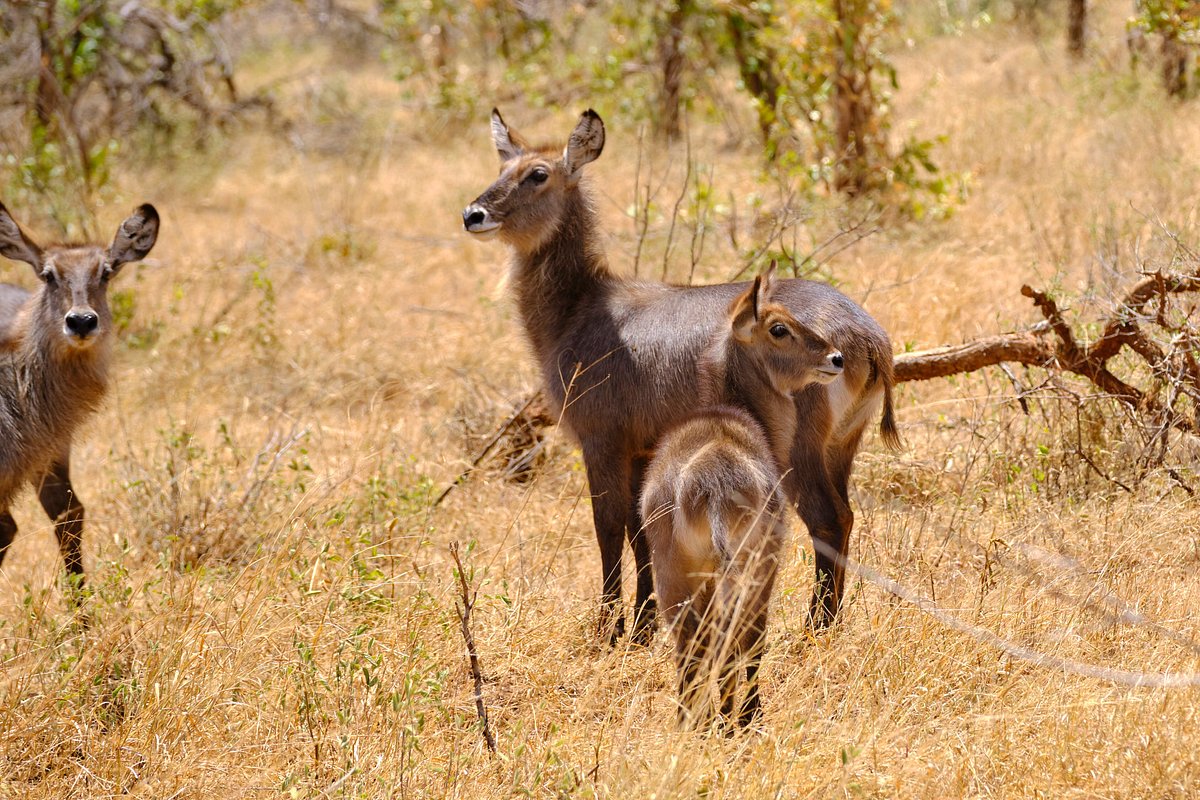The main source of water in Mkomazi National Park comes from the Umba River in the southeast. Apart from that, the park sees very little precipitation all year round making game drives along the river area worthwhile.
The most famous members of the Mkomazi natives are surely the African wild dogs and the endangered black rhinos that live in a private sanctuary. This park is also one of the best places to see large herds of oryx and gerenuks roaming freely in the open bushland. Other small and large mammals that call Mkomazi their home include lions, leopards, cheetahs, hyenas, jackals, elephants, buffaloes, hartebeests, giraffes, and warthogs.
A healthy population of 450 bird species is also found in the park and several species can be seen during a game drive. The most commonly seen species include go-away birds, ostriches, long-crested eagles, hoopoes, and bustards. Around the Umba River, sightings of kingfishes, flamingos, cormorants, plovers, ducks, and crocodiles basking on the banks are common.
Every day, thousands of people pass within a few kilometers of Mkomazi on one of Tanzania’s busiest highways. These and the northern circuit safari-goers are now most welcomed to discover the treasures of this wedge of hilly semi-arid savannah – home of large herds of giraffe, eland, hartebeest, zebra, buffalo, and elephant.
Mkomazi is a vital refuge for two highly endangered species, the charismatic black rhino and the sociable African wild dog, both of which were successfully reintroduced in the 1990s. Nomadic by nature, wild dogs might be seen almost anywhere in the park, however, the black rhino is restricted to a fenced sanctuary, ensuring their safekeeping for the enjoyment and prosperity of future generations.
Mkomazi supports several dry–country specialists species that are rare elsewhere in Tanzania; these include the spectacular fringe-eared oryx, with its long back–sweeping horns, and the handsome spiral-horned lesser kudu. Oddest of all is the gerenuk, a gazelle distinguished by its slender neck, bizarre alien-like head, and the habit of standing tall on its hind legs as it stretches for acacia leaves that other browsers cannot reach.
A game reserve since 1951, this new National Park takes its name from a word from Pare tribe denoting “scoop of water”, referring to little water. It is a fantastic destination for birdwatchers, with more than 450 avian species recorded, among them are the dry–country endemics such as the cobalt–chested vulturine guinea-fowl, other large ground birds such as ostrich, kori bustard, secretary bird, ground hornbill, and some migratory species including the Eurasian roller.
Location
Northern Tanzania split between Kilimanjaro and Tanga administrative regions. The park borders on the west of the Tsavo National Park in Kenya. The Zange entrance gate lies 112 km (69 miles) from Moshi, 550 km (341 miles) from Mwalimu J. K. Nyerere International Airport – Dar es Salaam, 142 km (88.7 miles) from Kilimanjaro International Airport, 120 km (75 miles) from Kilimanjaro National Park and 6 km (3.7 miles) from the town of Same.
How to get there
By air: Charter flights are available to Kisima Airstrip in the center of the park near the rhino
sanctuary.
By Road: The Park is 142km from Kilimanjaro International Airport, 202km from Arusha City and 550km from Julius Nyerere International Airport (JNIA). Zange entry gate is 6km from Same Town.
The Park is also easily accessible on special arrangement through Njiro, Kamakota and Umba Gates.
What to do at Mkomazi National Park
Game Drive
Wide ranging scenery, mind blowing beauty, a feeling of complete solitude brings in the anticipation of adventure During the drive one is able to see spectacular species such as fringe eared Oryx, Lesser Kudu and Gerenuk which rare elsewhere in Tanzania.
Walking Safari
It is not what you see! Its how you see it! Leaving your safari vehicle and taking a walk in this unspoilt nature with no sign of human intrusion leaves one with everlasting memories.
Hiking Hills
Mkomazi’s landscape is rich in hills which in hand makes it irresistible to be on top for great mind- blowing Views. Short hikes of up to 4hrs and longer hikes (above 4 hours) can be arranged. •
Bird Watching
Mkomazi is a fantastic destination for bird watchers. It has more than 450 bird species and it is the only place in Tanzania where you are likely to see the striking vulturine guinea fowl. Large ground birds such as ostrich, kori Bustard, Secretary bird and ground hornbill are all quite common on the grassy plains. Migratory birds such as European roller are also present from November to April. Don’t miss this rare chance by planning your trip to Mkomazi with kiwoito Africa Safaris .
Accommodation at Mkomazi National Park
There are comfortable cottages, permanent tented camp and a designated public and private camping sites. For those wishing to stay outside the park, there are hotels and guest houses in the nearby Same Town including; Babu’s Camp, Mkomazi Wilderness Retreat Camp, Elephant Motel, Mambo View Point Eco Lodge, Tanapa Zange Bandas.


